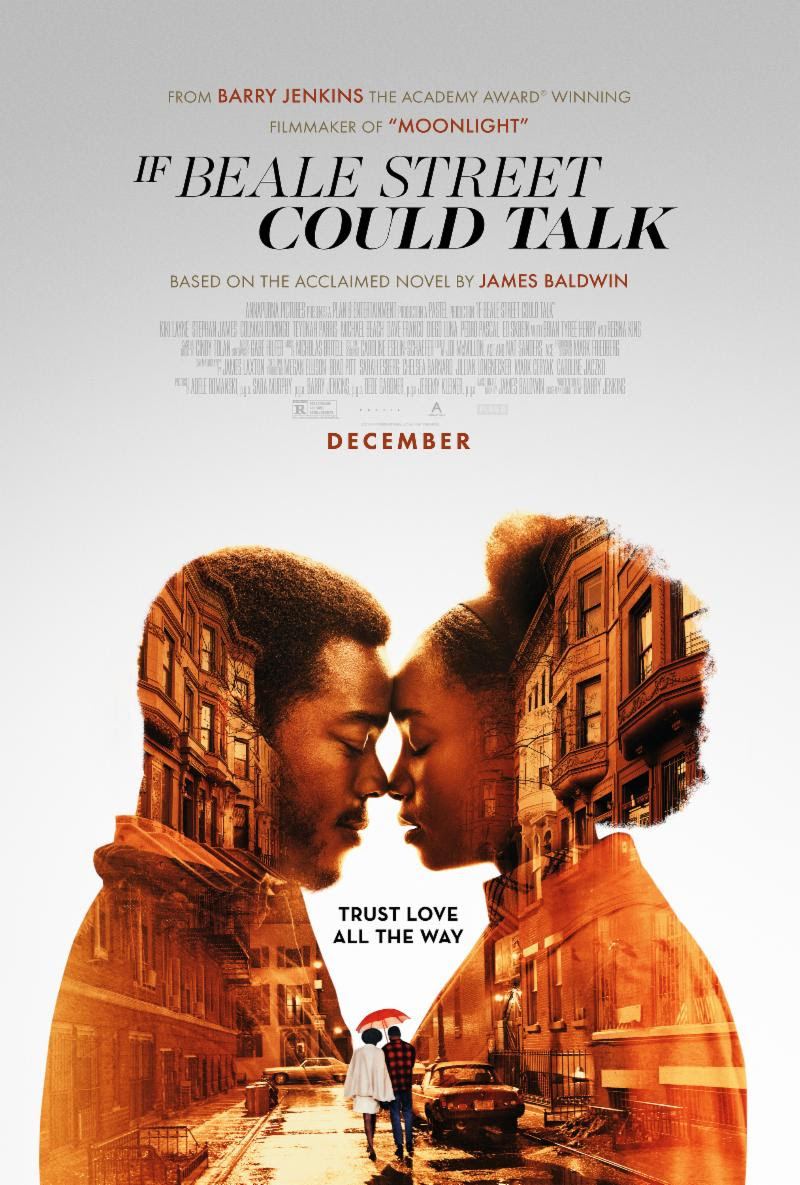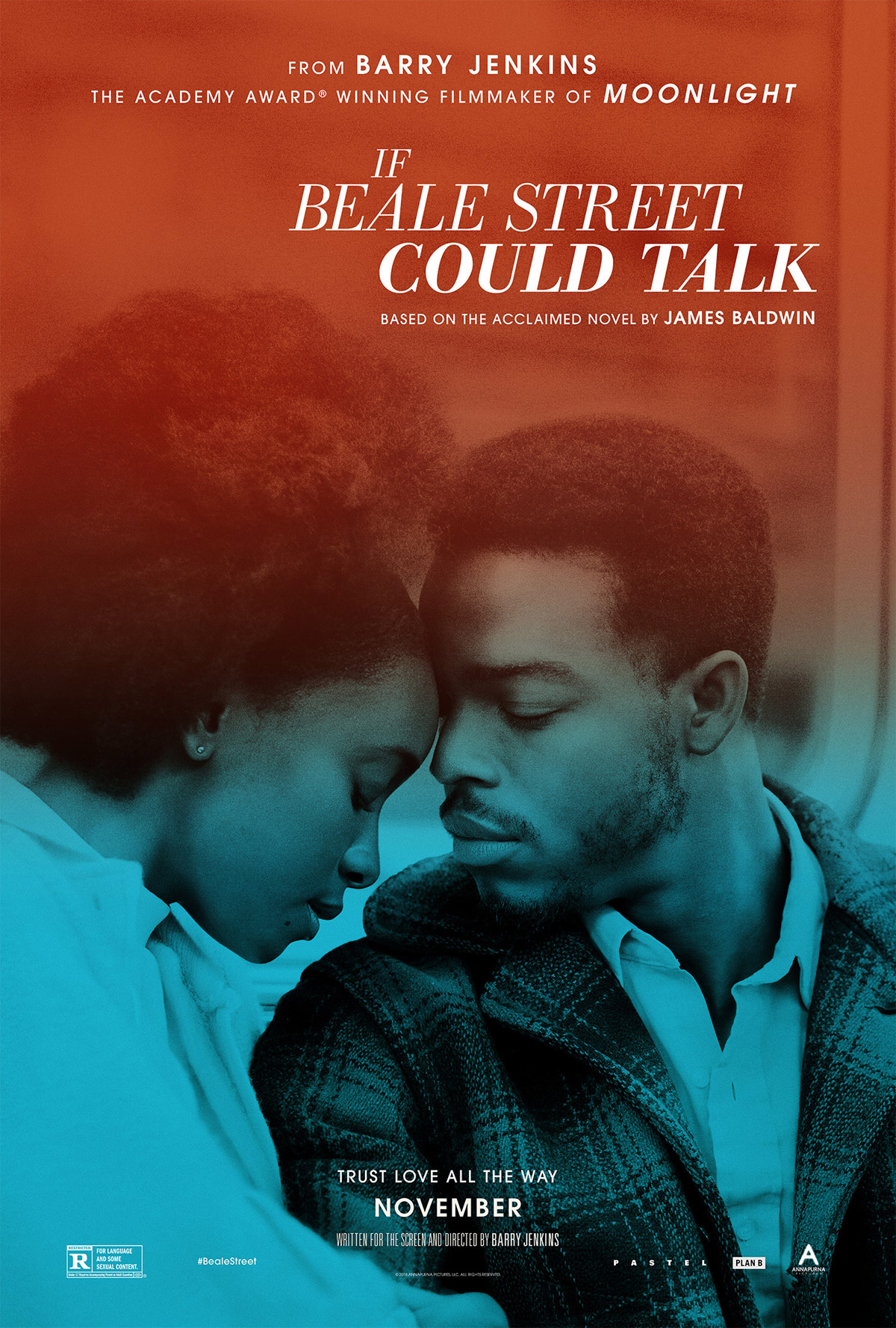Barry Jenkins has come to Houston. Sitting in a meeting room at the Four Seasons, he’s touring the country with his follow up to 2016’s Oscar winning Moonlight, a sprawling, ambitious adaptation of James Baldwin’s “If Beale Street Could Talk.” It’s a book and a film much like the director – thoughtful and complex – who sits in a red shirt and gold-rimmed glasses in some ways like a new Baldwin himself.
ComingSoon.net: Thanks for making the trip down to Houston.
Barry Jenkins: My pleasure.
CS: And thanks for making this movie. It was fantastic.
BJ: Thank you, man.
CS: So what led you to want make this, was it something that you had in your head even before Moonlight or something that just came about?
BJ: A combination of the two. In the summer of 2013 I took a trip to Europe. I knew I needed to write. So I actually wrote the screenplay for Moonlight and the adaptation of this novel during that writing trip and which was crazy because I didn’t have the rights to the novel at the time I adapted it. I came back with the script did a couple rewrites and sent it to the James Baldwin estate. I’d always been a fan of James Baldwin’s work, but not necessarily a fan of this novel. I hadn’t actually read it and I read it for the first time … just this idea of a blend between a romance and a story about systemic injustice really moved me.
CS: When you read it, it doesn’t feel like it lends itself to cinema.
BJ: Exactly. It’s not a natural adaptation. Giovanni’s Room, because it’s so contained, like this chamber piece – the bar’s a chamber, the apartment’s a chamber – that one I can maybe see, and that’s my favorite work by James Baldwin. The first time I ever thought of adapting him it was that book. But I think part of the challenge and I think what really creates something artistically, aesthetically interesting is the idea of adapting something that isn’t obviously adaptable. In that way, with the non-linear quality of the book and the syntax of Mr. Baldwin’s prose kind of yielded something that is this strange thing all its own.
CS: And it feels like his voice comes through, with especially with the narration.
BJ: There’ such a power in the way Baldwin describes things. I was reading a quote from this cartoonist, a German cartoonist, who said ‘if I was going to describe the way a sunset looks I would describe it in English, I wanted to describe how it feels I would describe it in German, if I wanted to describe what it meant I’d describe it in French. In a certain way James Baldwin is so gifted in describing things in ways that only he could. This blend of how a thing feels in a tactile way but also how it feels in a very sensual way as well. Something more ethereal. It was very interesting to work on.
CS: It has a feeling, when watching it, of several different contrasting story forms: sometimes it’s a play, sometimes it’s a tone poem … was that intentional?
BJ: It was. The first act was was kind of like a kitchen sink drama, but it’s like an AB storyline so the A storyline is Tish has to tell everyone she’s pregnant which you can’t get more kitchen sink drama than that. This young girl whose husband is awaiting trial has to tell everybody that she’s pregnant. But on the B-side she’s also remembering basically the greatest day in her life which is when she and Fonny confirm their love for one another. And so in that way that’s the schematic for the first section. What I love to do is to, in a very clear way, delineate for the audience that now form is changing. Because after Tish and Fonny make love we go directly to this montage where Tish is now explaining the circumstances of how all this came to be. And now we’re reminding you you’re also in a procedural. And now also too because we were cutting back and forth, back and forth, the scene in the living room functions like a play and then we have this eight minute shot where these two characters are about to make love. Now time is being delivered to the audience in a different way to help you understand that the film has a very malleable form; in the first act it has one form, in the second act it is a different form and in the third act when Puerto Rico, the third act has a different form as well.
CS: You have such a varied cast, these incredibly veteran actors like Regina King and Colman Domingo for doing great work but you also have newcomers like Kiki where it’s their first time on screen. As a director how do you balance that and get performances from them?
BJ: Now, coming after Moonlight, I think everybody understands that’s going to be a part of the process. I’m sure when everyone saw the news break that I’d cast Kiki they understood ‘okay I’m going to be playing opposite someone who maybe doesn’t have the experience I have’ but also to maybe doesn’t understand the way to work in this medium? But that yielded something that was really love me for me to see which was the same thing happen with Mahershala on Moonlight … you saw these very veteran actors kind of taking the younger actors, unexperienced actors, under their wing and showing them how to navigate that process. The nurturing that’s happening off-set is now bleeding into the performance on screen. It was a really lovely thing. For me what happens is, not that there’s a tension but you can see that the more trained actors have these tics, these parts of their process, that they look across at their scene partner who doesn’t have those things and is being a bit more loose, maybe a bit more raw, and some of that rawness then bleeds into the technique. It creates this thing that can only happen when you blend these two different processes in the same sequence.

CS: I know rehearsal time is always tough for film vs…
BJ: Non-existent!
CS: Non-existent. Where you able to get them into their roles together before shooting?
BJ: It was, we only had one day of rehearsal. It was with Tish’s family. Mark Freiburg, our production designer, built all the interiors. None of those are freestanding. Her house was a brownstone in Harlem but Mark gutted it because it was about to be flipped because of gentrification. He told the guy ‘look let us demo, will we make a film in here and then afterwards we will demo it again and you can tell people a James Baldwin movie was filmed in this house and it will take the property values up.’ So we did one day of rehearsal in that house with rubble everywhere. But here’s the beauty of an adaptation of James Baldwin, there’s so much richness in the text that I told all the actors, it takes 20 hours to read the book, 2 hours to watch the film. Those 18 hours? Bring them into performance. So an actor like Brian Tyree Henry can show up with no rehearsal at all and he’s only on set for one day but he’s got all this all this emotion, all these feelings draw from. From the works of James Baldwin. So he came in knowing who that character was, deeply, intimately. As deeply as if he’d been rehearsing for three weeks.
CS: It felt it, with actors like Michael Beach who’s only in a few scenes …
BJ: And he’s just so … his character in the book, what I see and what I love and what’s so cool about cinema and an adaptation. You don’t have to have read the book to understand what Michael is doing in that scene. But if you’ve read the book you understand what Michael is doing in that scene, and more importantly Michael understands what he’s doing in that scene. After that scene is over you can really tell this character is going someplace very, very dark. And that’s the blessing of having a rich text like this to draw from. An actor gets on set and it’s not just about the beginning of the ending of the sequence that they’re in right now. It’s about the totality of that character’s experience.
CS: I’ve suggested to people they watch it first and then read it.
BJ: Me too! [Laughs]. But, not the point but one of the main hopes of this film is that it introduces people to the work of James Baldwin.
CS: One of the other big takeaways I had was it felt like there was a real growth in the visual style, like the birthing sequence.
BJ: Well there was more growth in the budget! [Laughs].
CS: That always helps! Having that support, were there things you were trying in this film that you’d wanted to do before but hadn’t?
BJ: No, not really. I mean there were things that I hadn’t done before that I knew I’d have to do in this film. For example if you look at everything I’ve done before this film there might be one scene where there’s more than two people sitting across a table, having conversation. And then it might only be three. Whereas in this film there’s eight people sitting in a living room, having a conversation. And then the scene you mentioned with the birth, the first half of the scene’s completely CGI which I’ve never really dealt with. Everything under the water is completely CGI, then there’s a stitch when the baby comes through the water. I’ve never enjoyed storyboarding; I’ve done it for commercials but I feel like you get the board on set you’re directing towards the board, you’re not directing. But in that sequence we had to board it out completely because it’s very complex. That shot – it didn’t cost more than Moonlight but it certainly was more than the budget of my first feature. So yeah it was nice to have different toys to play with but you know my whole thing with making the film was to approach it the same way. It’s the same cinematographer, the same editor, same costume designer, same producers, same writer-director … let’s approach it the same way. Because it’s not broke. Let’s use these tools to do what we do.
CS: This felt like a really ambitious reach for just a third film; I was trying to think if there was something even more ambitious beyond this but was having a hard time coming up with something.
BJ: I’ve seen that conversation cut two ways. Some people you know are ‘of course he made another black drama.’ Then there are other people who feel the same way you do. If you look at the film in it’s totality, the way time moves and then visually the way the film was constructed and also to just like the massive size of the ensemble compared to other previous work, it is stretching in a certain way. But for me it’s about the characters. I mean look, I’m friends with Ryan Coogler and seeing his evolution from Fruitvale to Creed to Black Panther, it’s inspiring. Because I do love the process and making films and maybe someday there will be something that requires a larger canvas. But my hope is that I can bring my voice to that intact and still make that in the air quotes “Barry Jenkins” way.
CS: I don’t think there’s any question that there is was a definite Barry Jenkins vibe from this.
If Beale Street Could Talk opens in limited release on Christmas Day.
If Beale Street Could Talk
-
If Beale Street Could Talk

-
If Beale Street Could Talk











